坪坦書屋,湖南懷化 | Condition_Lab
試想象,在一個(gè)傳統(tǒng)的木構(gòu)房屋中嵌入了一個(gè)無止境的樓梯,一個(gè)由踏板組成的、無限延伸的環(huán)。為了增加神秘感,這個(gè)樓梯并沒有目的地,它就是目的地本身。書架和可以俯瞰庭院的窗戶組成的矩陣構(gòu)成了建筑的外墻。坪坦書屋不被定義為一個(gè)傳統(tǒng)的兒童圖書館,而是一個(gè)可以讓孩子們一邊讀書一邊玩耍的地方。這也是中國鄉(xiāng)村圖書館的新范式。
Imagine a staircase that never ends, an infinite loop of risers and treads squeezed into a traditional timber house. To add to the mystery the staircase has no destination, it is the destination itself. The walls of the house have been transformed into a matrix of bookshelves and windows overlooking a courtyard. This is no ordinary children’s library, the Pingtan Book House is a place where kids read and play at the same time, a new paradigm of rural village library in China.
▼項(xiàng)目概覽,overall view ? Zhao Sai
近年來,侗族村莊一直面臨著一個(gè)嚴(yán)峻的問題:美麗的木構(gòu)建筑遺產(chǎn)迅速地被外來材料 – 混凝土所替代。過去幾個(gè)世紀(jì),侗族人一直用當(dāng)?shù)氐纳寄窘ㄔ齑迩f,如今,這種可持續(xù)材料在侗寨的地位正在降低。當(dāng)代生活方式和中國農(nóng)村對現(xiàn)代城鎮(zhèn)化的追求正在挑戰(zhàn)侗族的傳統(tǒng)文化基因。坪坦中心小學(xué)就是一個(gè)典型的例子。這所學(xué)校設(shè)立于1951年,而現(xiàn)在坪坦中心小學(xué)的混凝土校舍建造于20年前。圍繞著操場是教學(xué)樓、教師宿舍、學(xué)生宿舍、行政樓和食堂。坪坦中心小學(xué)現(xiàn)有300多名6-13歲的學(xué)生。
▼項(xiàng)目夜景鳥瞰,aerial view of the project and surrounding environment at night ? Zhao Sai
For years, Dong Minority villages have been confronted with the ever-present reality of their beautiful architectural heritage rapidly evaporating, eradicated by the arrival of a foreign material – concrete. Entire villages built over centuries from a single sustainable material, indigenous China Fir, are rapidly losing their identity. Dong’s cultural DNA is being challenged by contemporary living and the quest to modernise. The Pingtan primary school is a prime example of this condition, a school built 20 years ago on the edge of the village, entirely made of concrete. The complex, which accommodates more than 300 children aged between 6-13, is made up of a cluster of five buildings, including a Hall and Canteen, Classroom, Dormitories and Administration all surrounding a courtyard.
▼立面夜景,night view of the facade ? Zhao Sai
▼立面夜景細(xì)部,detail of the facade ? Zhao Sai
借此,Condition_Lab看到了一個(gè)可以保留侗族木構(gòu)基因的建構(gòu)機(jī)會(huì),希望可以重新喚起侗族人民對他們自己文化遺產(chǎn)的興趣。活態(tài)遺產(chǎn)的形式,可以讓孩子們和侗族村寨重新產(chǎn)生鏈接,鼓勵(lì)他們通過直接參與的方式欣賞這些寶貴的文化。這個(gè)項(xiàng)目是Condition_Lab在坪坦河流域建造的第二個(gè)圖書館,而它的姐姐——高步書屋位于坪坦河上游十公里外的高步村。這兩個(gè)方案的概念相似,也非常簡單:在侗族傳統(tǒng)的干欄結(jié)構(gòu)的基礎(chǔ)上,用現(xiàn)代建筑設(shè)計(jì)的方法重新詮釋樓梯、墻壁、窗戶和地板等元素。
▼立面圖,elevation ? Condition_Lab
For these reasons Condition_Lab saw an opportunity to make a small insertion, to introduce a timber structure that retained the Dong architectural DNA that could reawaken a sense of wonder in their heritage. A form of “l(fā)iving heritage” that would reconnect and inspire children, allowing them to appreciate their precious culture via direct engagement. The project is the second library Condition_Lab design and builds in the region, the first Gaobu Book House is located 10 km upstream acting as the elder sister in this family of interventions. The idea is simple, each project takes the traditional typology of the Dong “Galan” timber frame house and adapts it to a contemporary design, where elements such as stairs, walls, windows and floor are reinterpreted.
▼立面日景,day view of the facade ? Zhao Sai
▼木制結(jié)構(gòu)與陽光板的結(jié)合,the combination of wooden structure and polycarbonate panels ? Zhao Sai
Condition_Lab團(tuán)隊(duì)與當(dāng)?shù)啬窘臣爸写蠼ㄖW(xué)院的學(xué)生密切合作。“在地”、”緩慢”和”聆聽”是我們工作模式的關(guān)鍵。通過多年來的實(shí)際建構(gòu),我們獲得了村民和校長的信任,也找到了項(xiàng)目的贊助者——坪坦書屋全部的建造資金由陳張敏聰夫人慈善基金捐贈(zèng)。
▼剖面圖,section ? Condition_Lab
Condition_Lab worked closely with local carpenters and students of architecture from CUHK School of Architecture. Local, slow and listeing are the key attributes behind the project, without them the library wouldn’t be possible. Through a process of participation we gained the trust of the villagers and the school principal, enabling us to create a social narrative that also helped us find donors who would eventually sponsor the project. The building was build with a single donation from Chan Cheung Mun Chung Charitable Fund of 600,000 HKD that covered the entire construction.
▼內(nèi)部空間概覽,overall view of interior ? Zhao Sai
▼由書屋看操場,viewing the playground from the book house ? Zhao Sai
▼樓梯下方符合兒童心理尺度的玩耍空間,the play space under the stairs conforms to the psychological scale of children ? Zhao Sai
坪坦書屋,從建筑結(jié)構(gòu)到墻、樓梯、地板的每一個(gè)元素都完全由木材建造,我們在當(dāng)代建筑中很難再找到這樣的例子。唯一采用的外來材料是用于立面采光的陽光板。書屋也完全按照傳統(tǒng)侗族木構(gòu)技藝建造。
The remarkable achievement, something that we seldom occurs in contemporary construction, is that the fact that the Book House was built entirely using a sole material, every element such as wall, stairs and floor were built in timber. The only ‘foreign’ material being the polycarbonate panels used for the fa?ade to allow sunlight to filter in and views out. Construction followed traditional Dong carpentory details, where ‘Dragon Joints’ composed of male and female interlocking parts are used as the main structural bond.
▼建筑結(jié)構(gòu)到墻、樓梯、地板的每一個(gè)元素都完全由木材建造,the Book House was built entirely using a sole material, every element such as wall, stairs and floor were built in timber ? Zhao Sai
▼傳統(tǒng)侗族木構(gòu)技藝的體現(xiàn),construction followed traditional Dong carpentory details ? Zhao Sai
▼書屋細(xì)部,details of the book house ? Zhao Sai
這個(gè)項(xiàng)目的價(jià)值在于兩個(gè)主要的出發(fā)點(diǎn)。第一,與坪坦小學(xué)的孩子有直接的聯(lián)系。除了讓他們能在書屋里學(xué)習(xí)玩耍,我們希望他們能意識到在這個(gè)瞬息萬變的世界里,存在于他們文化當(dāng)中的愛與希望是多么重要。第二與建筑學(xué)科有關(guān)。當(dāng)代建筑為了滿足開發(fā)商的需求,幾乎失去了它們的靈魂,尤其是像在香港這樣的大都市。我們希望坪坦書屋能讓人們意識到建筑的社會(huì)性也同等重要,社會(huì)影響力并不一定跟巨額資金掛鉤,設(shè)計(jì)也不僅存在于高端項(xiàng)目之中,而建筑本身就必定有它存在的意義。
The value of this project lies in two fundamental lessons. The first relates directly to the children of Pingtan who beyond enjoying playing in the library have realized their culture is alove and remains relevant in this fastly changing world. The second relates to the discipline, at a moment when architecture especially in urban metropolis like Hong Kong seems to have lost its soul to ever demanding developers, makes one aware of the social importance of architecture. Social impact does not require large amounts of financial investment, design is not limited for highend projects, architecture must have a purpose.
▼施工過程 – 外觀,construction site – exterior view ? Condition_Lab
▼施工過程 – 內(nèi)部空間,construction site – interior view ? Condition_Lab
▼模型,model ? Condition_Lab
▼場地平面圖,site plan ? Condition_Lab
▼底層平面圖,ground floor plan ? Condition_Lab
▼二層平面圖,first floor plan ? Condition_Lab
項(xiàng)目名稱:坪坦書屋
設(shè)計(jì)團(tuán)隊(duì):Condition_Lab & UAL Studio
項(xiàng)目地點(diǎn):中國湖南省通道侗族自治縣坪坦鄉(xiāng)
項(xiàng)目類型:小學(xué)圖書館
面積:180平方米
項(xiàng)目成員:Peter W. Ferretto、 蔡凌、林敏欣、劉紫薇、王淯仟
項(xiàng)目建筑師:劉紫薇、 林敏欣
施工方:楊劍及施工團(tuán)隊(duì)
項(xiàng)目時(shí)間:2019-21
項(xiàng)目經(jīng)費(fèi):600,000港幣/500,000人民幣
贊助方:陳張敏聰夫人慈善基金
攝影師:Zhao Sai、Chen Xiaotie
更多相關(guān)內(nèi)容推薦


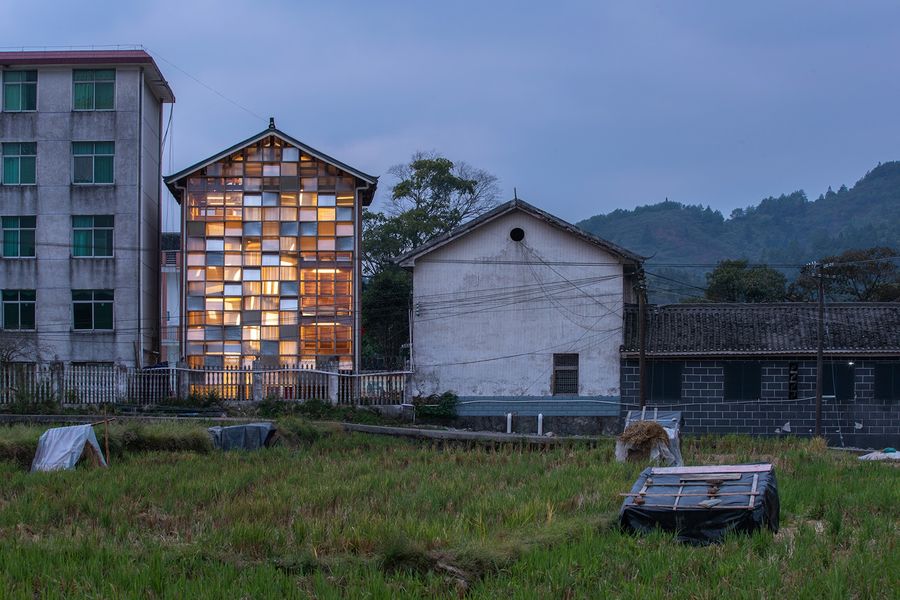

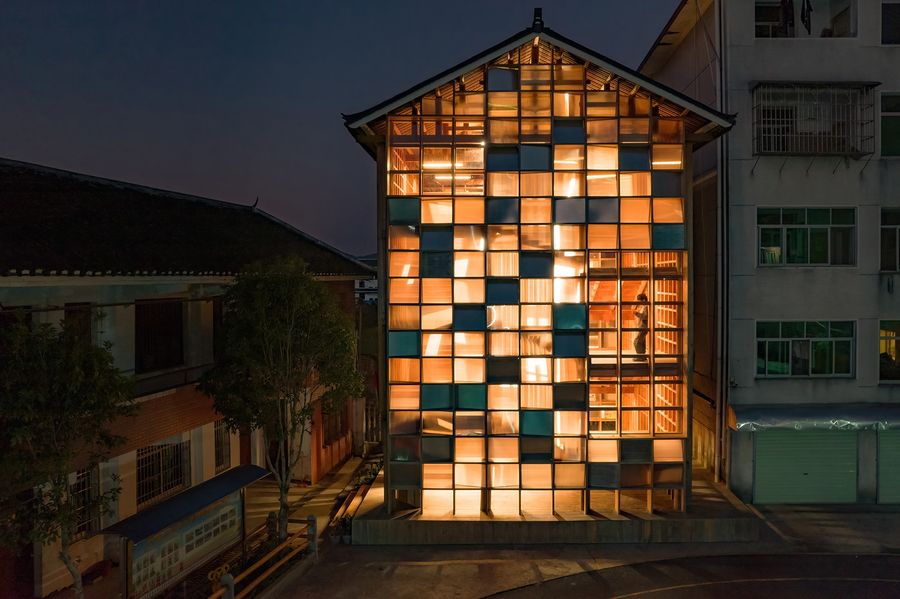

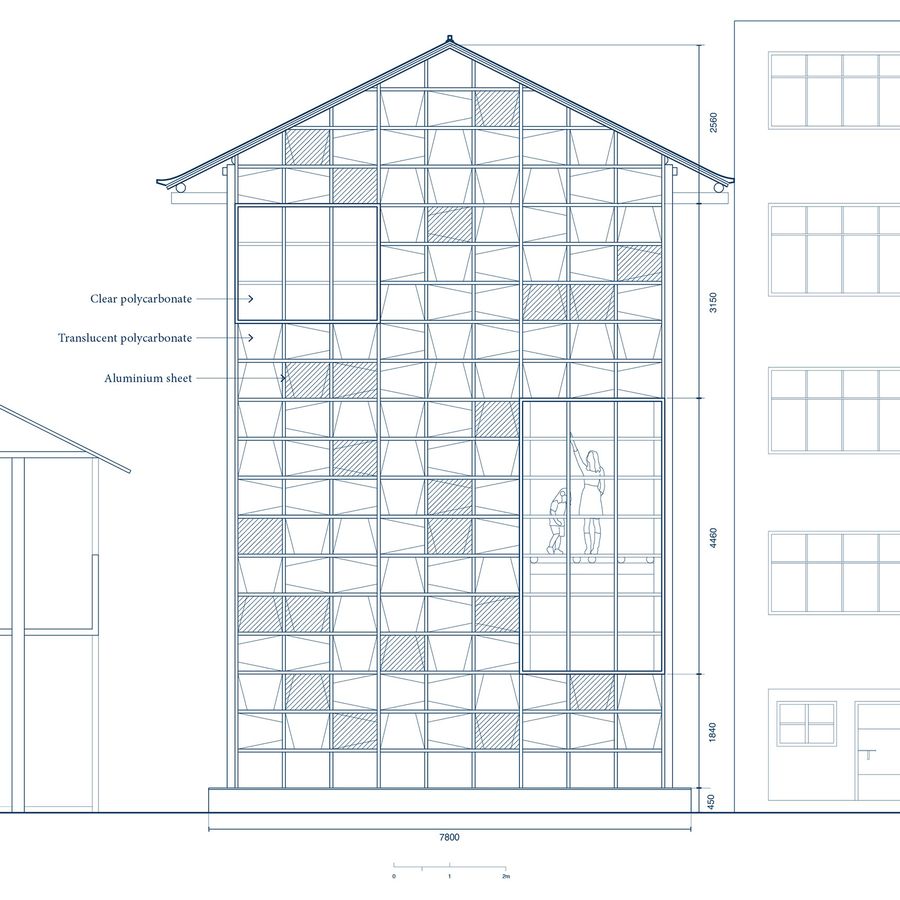
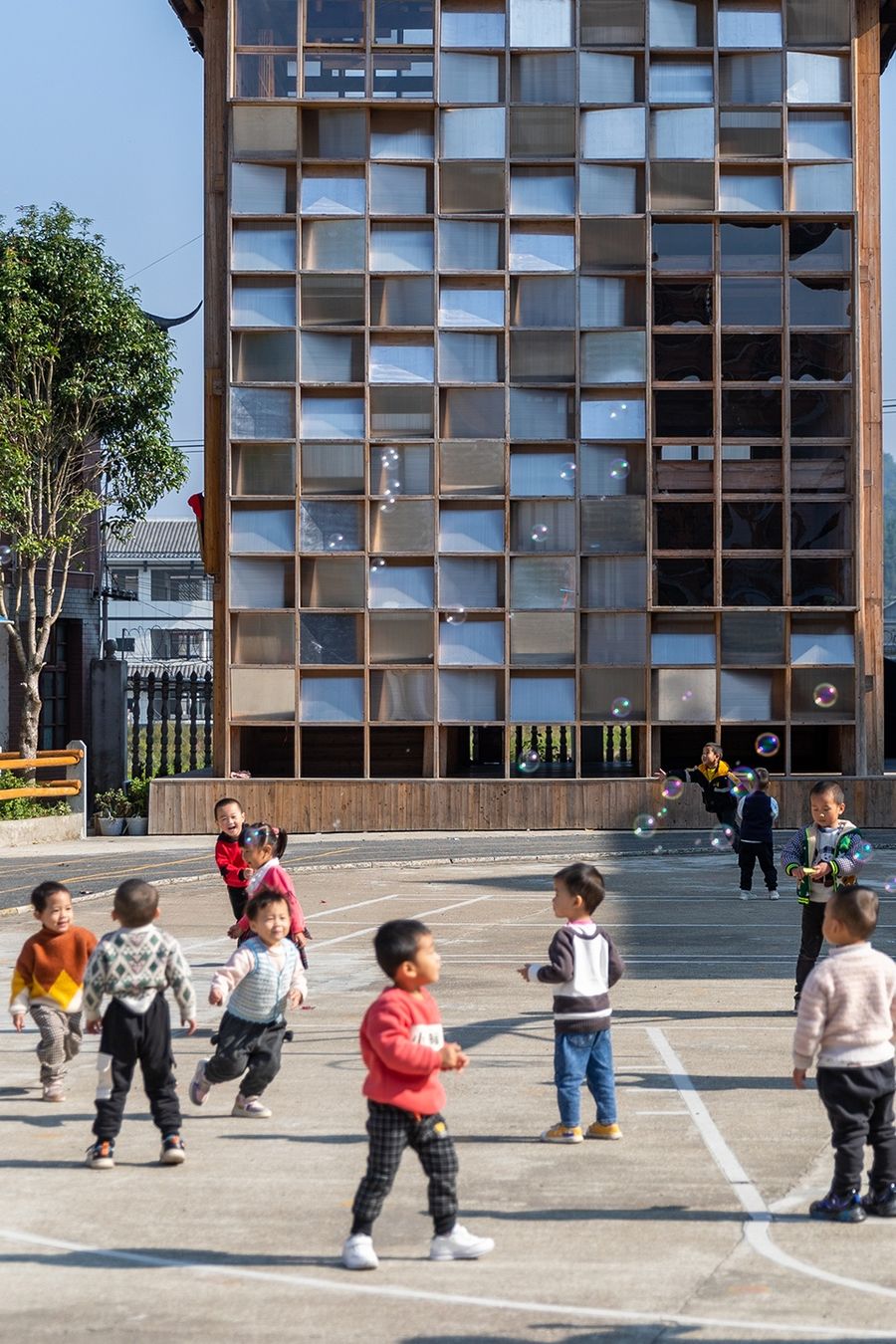
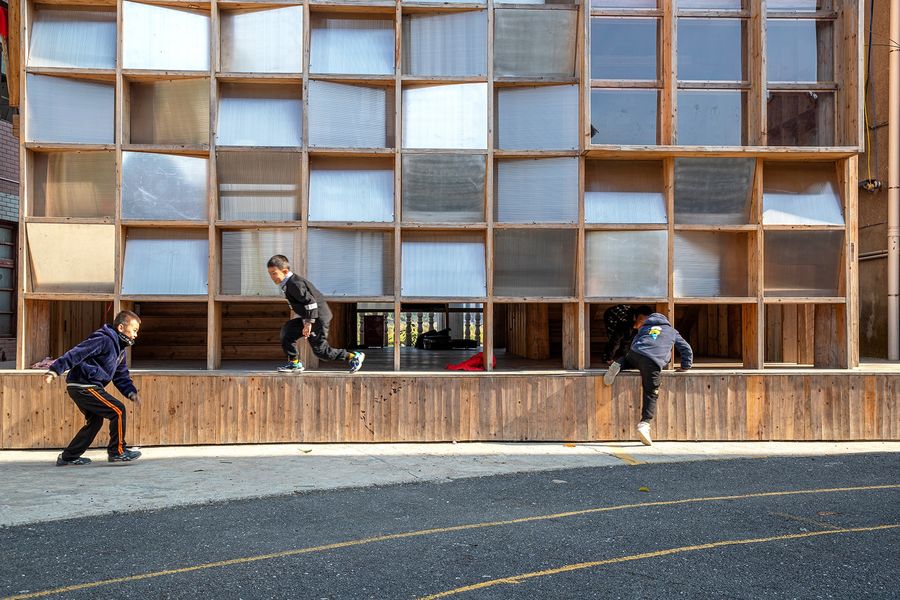
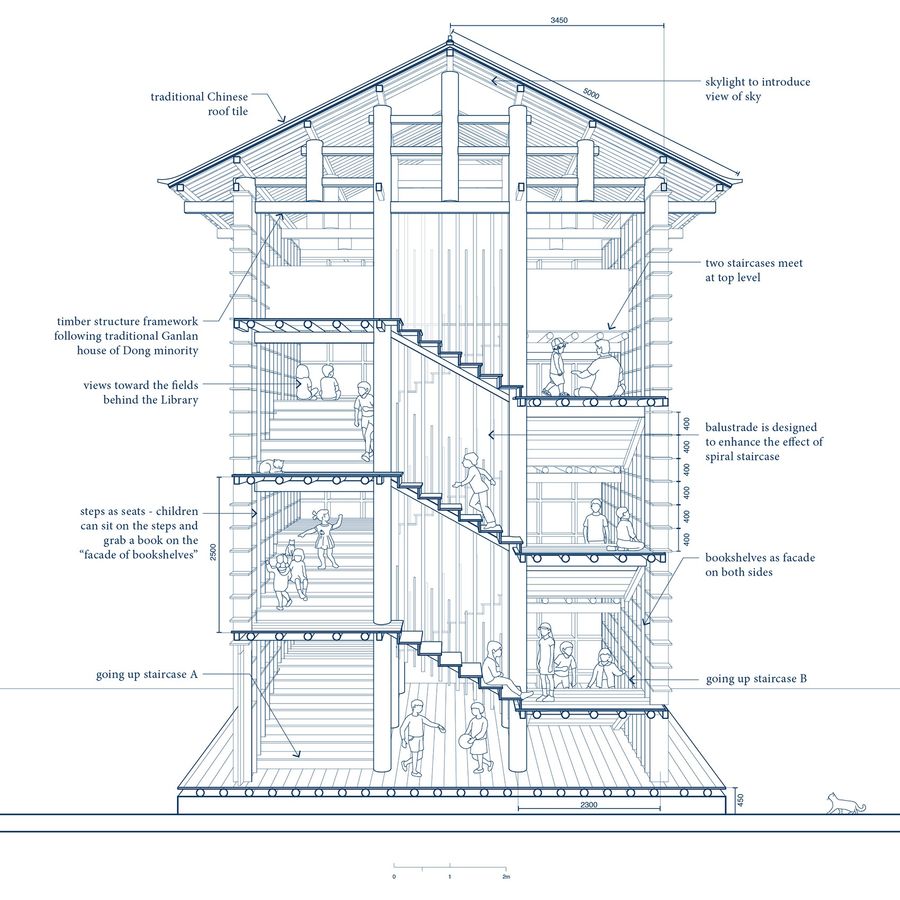
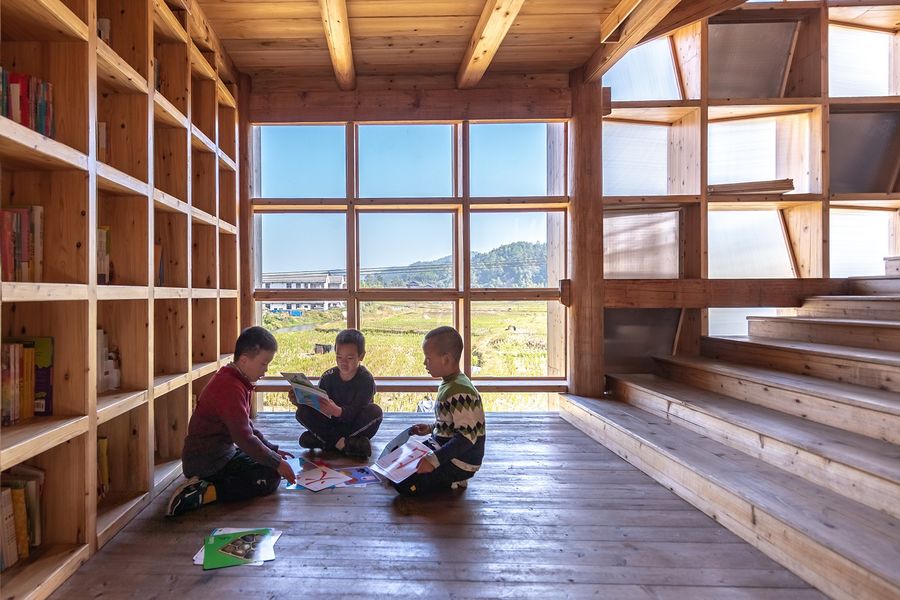
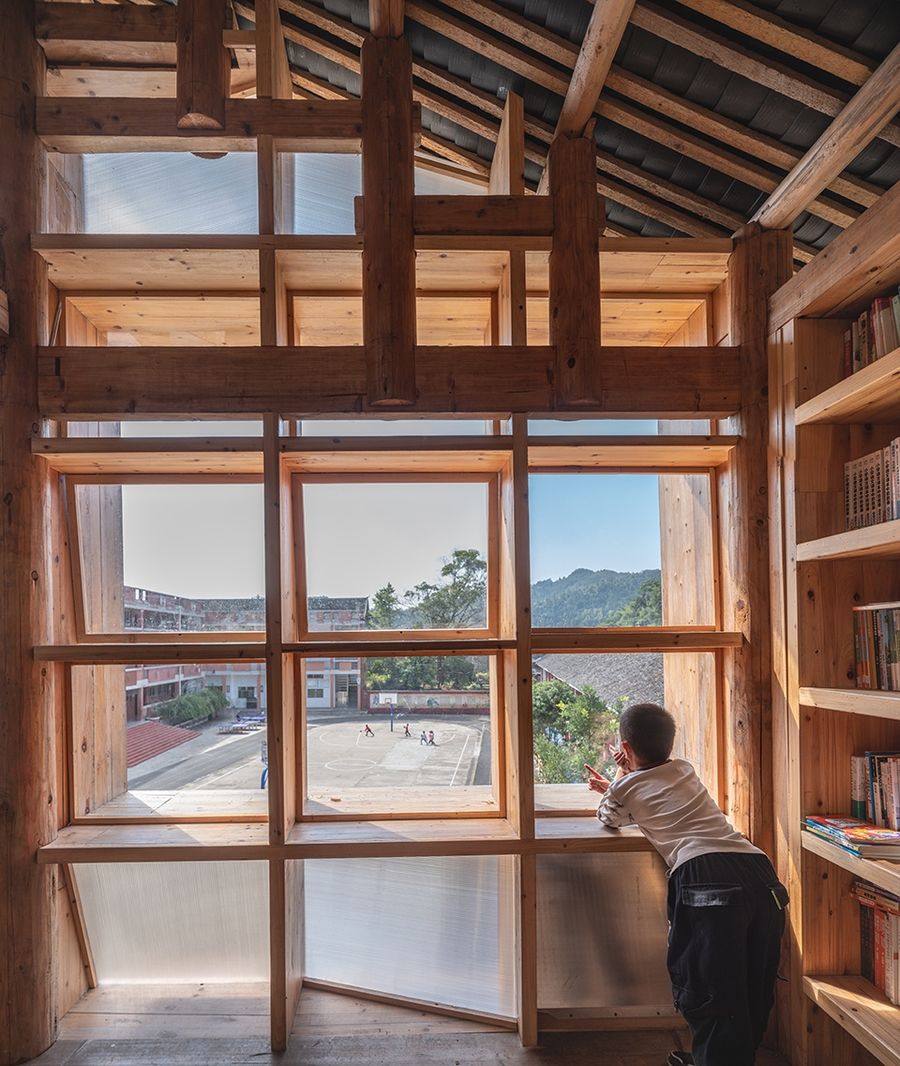
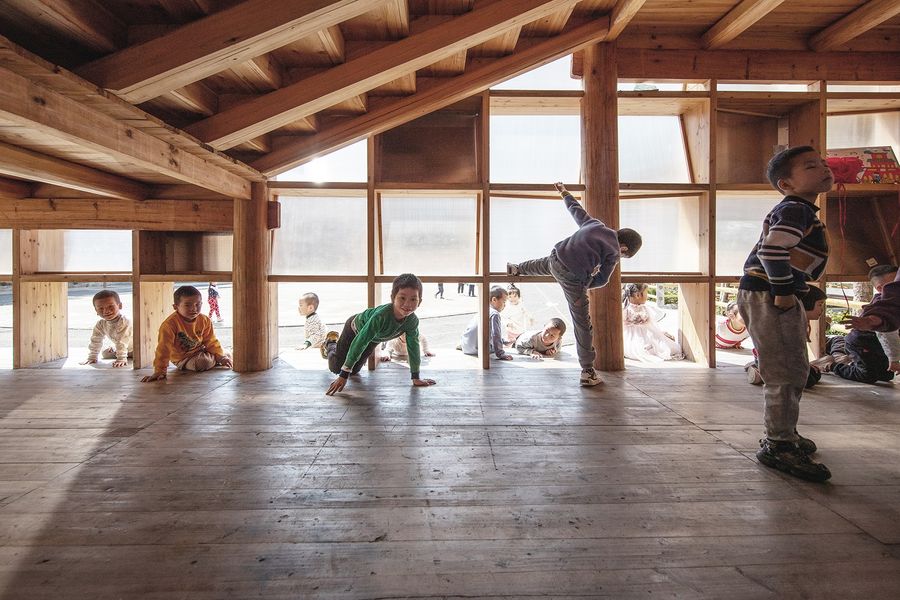
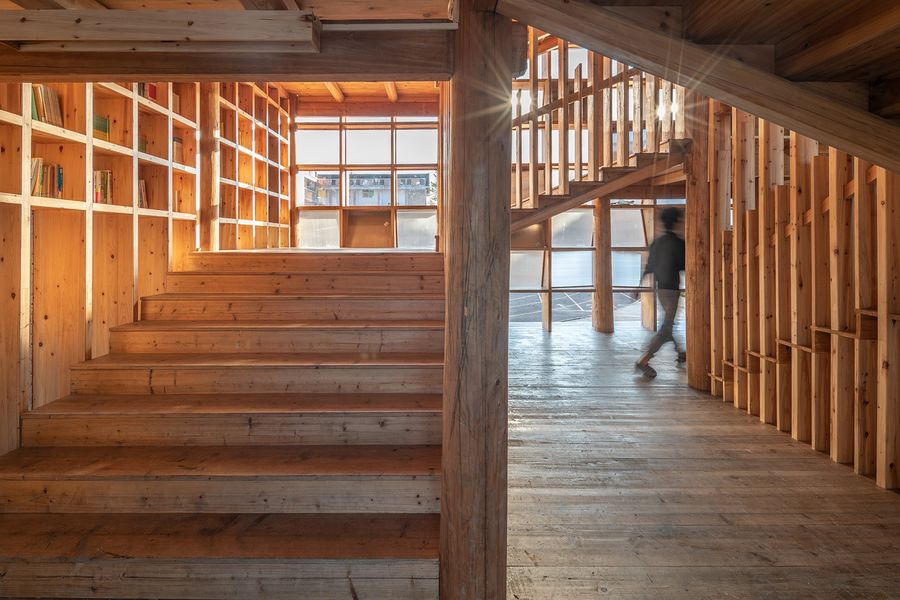
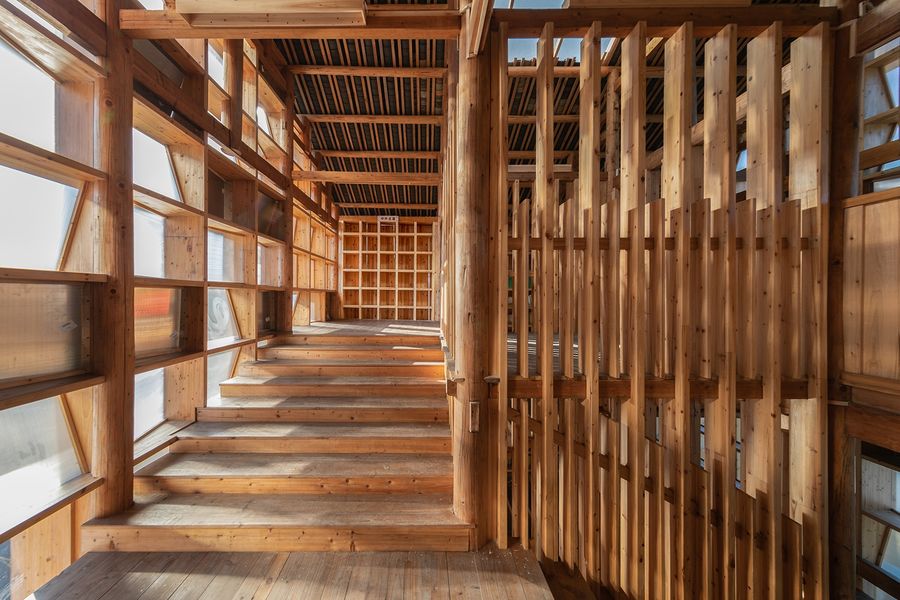
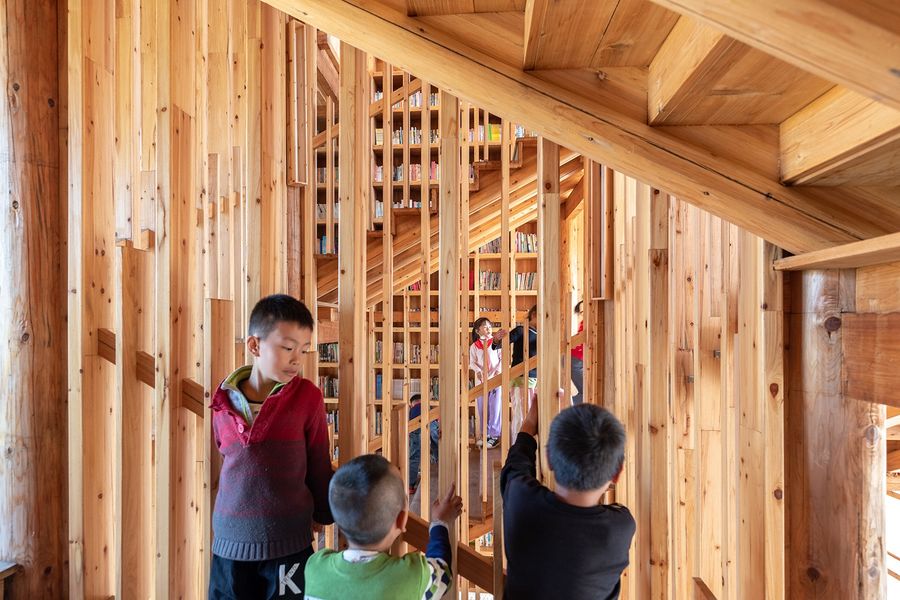
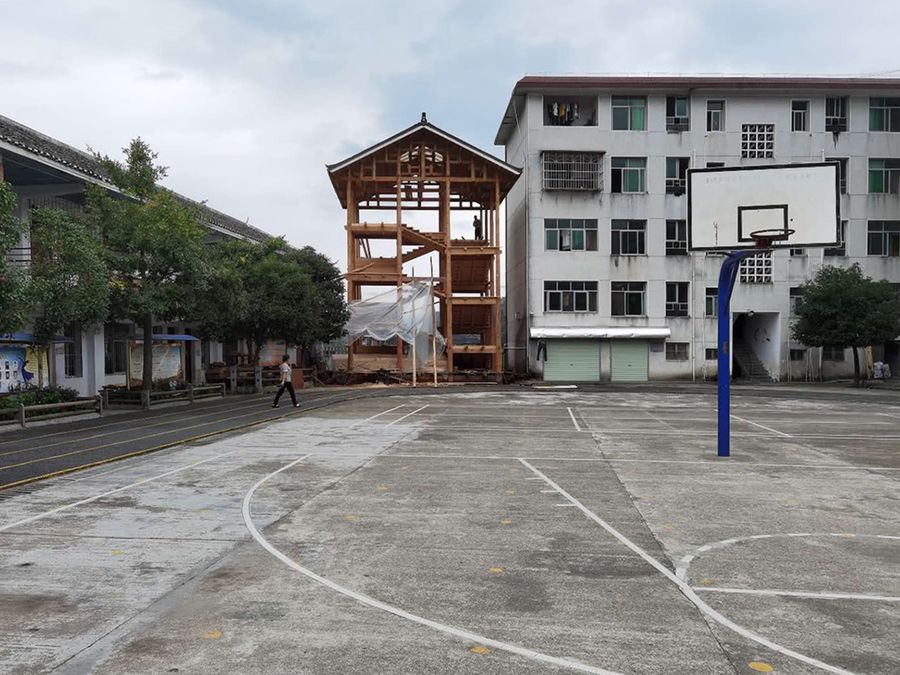
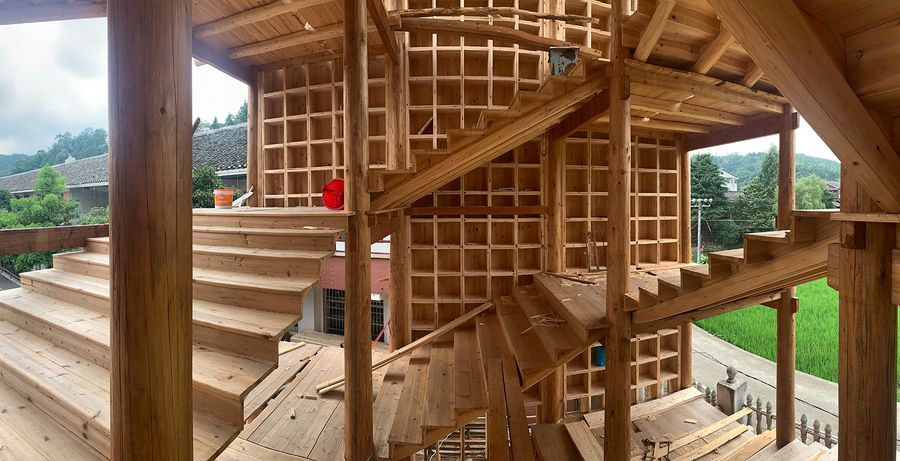
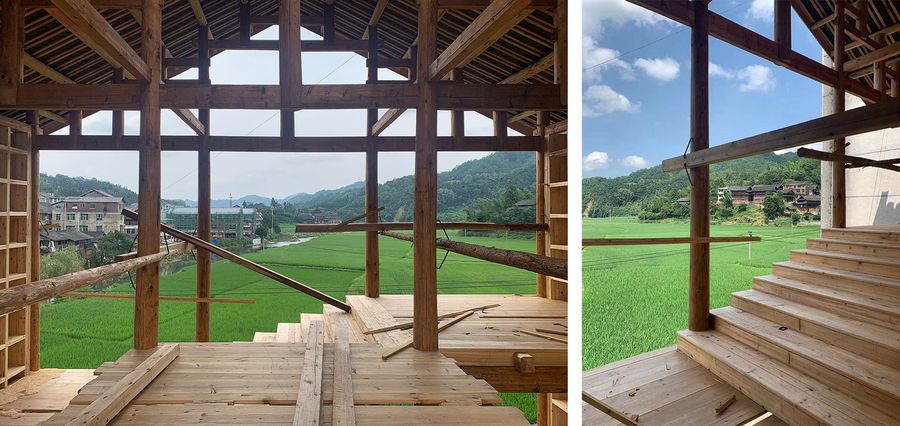
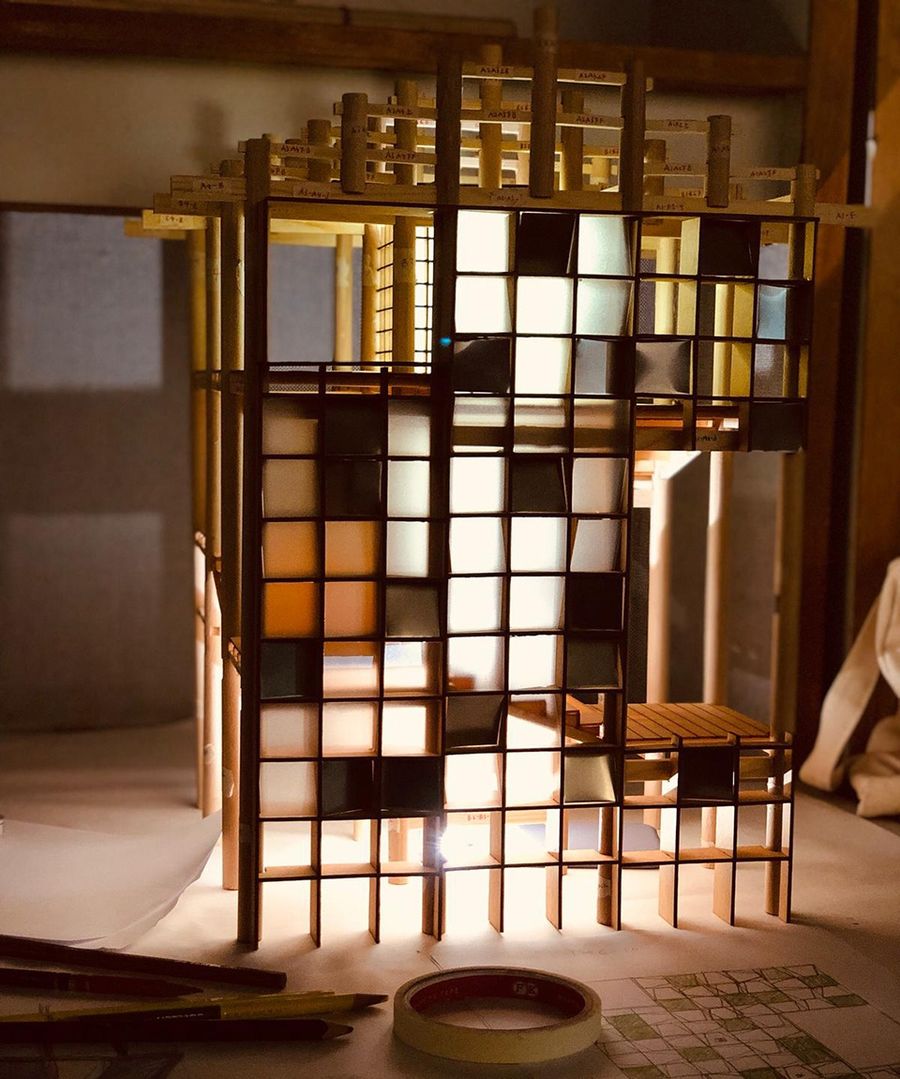

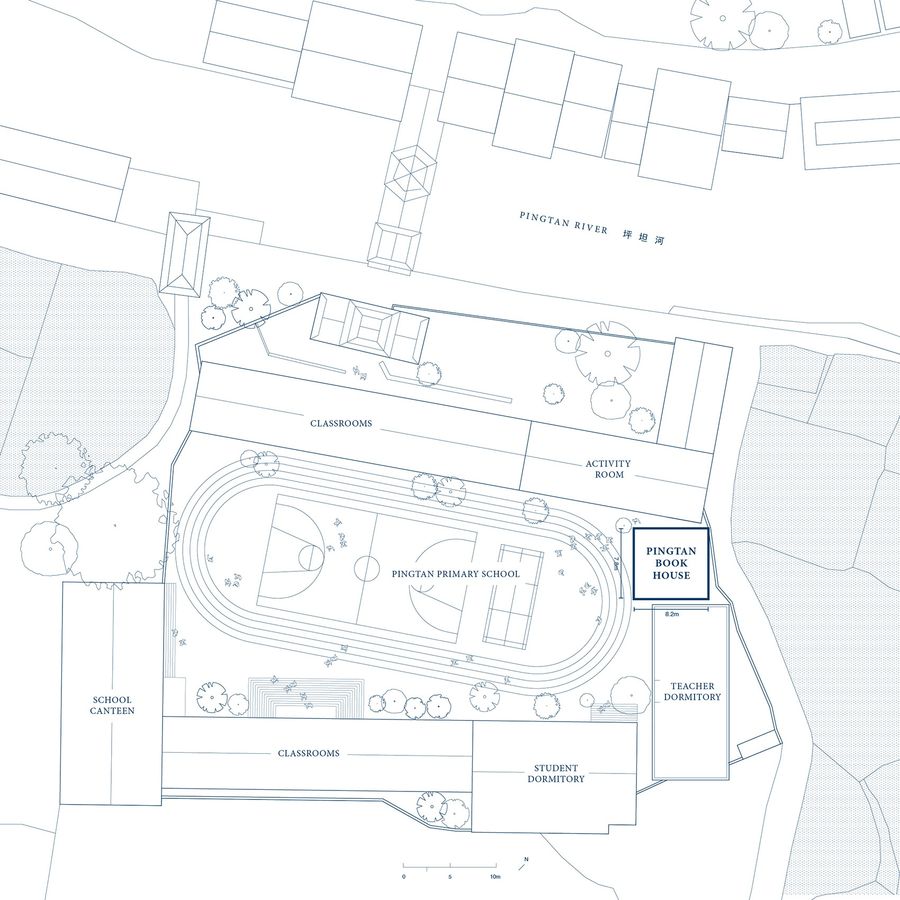
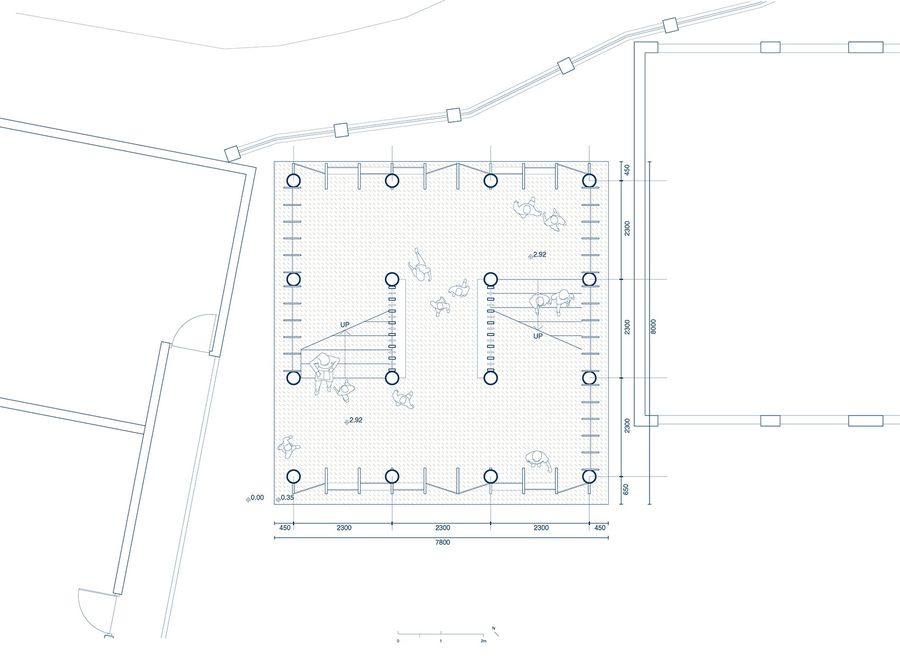
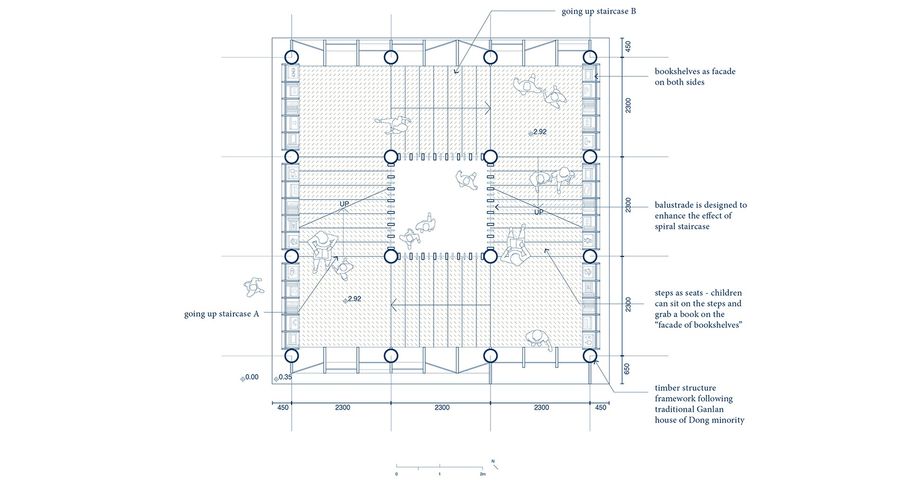



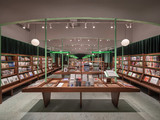







評論(0)